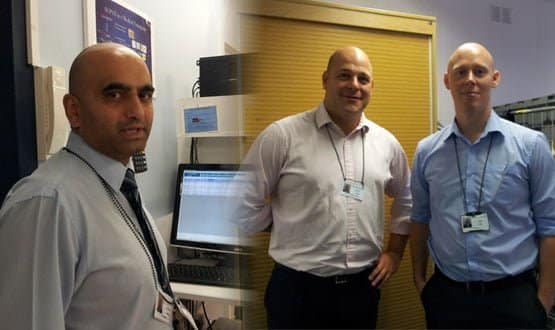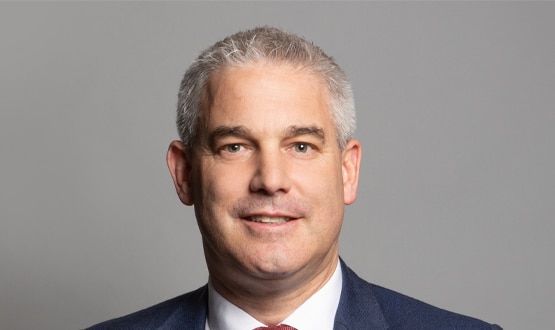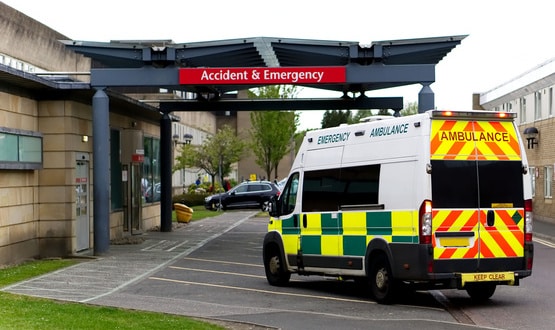Concrete CoWs
- 27 November 2013

Milton Keynes might be one of Britain’s best-known experiments in town planning, but its services have not always kept up with its growth.
Its hospital, for example, has not expanded with its population, and the set of low-slung buildings that were built for 20,000 patients a year now have to deal with 75,000.
This puts inevitable pressure on services, not least A&E, which has just ten cubicles, and is humming along steadily on a cold and soaking wet Wednesday morning.
As Darren Leech, the chief operating officer of Milton Keynes Hospital NHS Foundation Trust, says: “We have pushed out here and there, but we cannot just pull pillars down and move things around, so getting an efficient flow [through the A&E] we have is really important.”
Finding the right IT
Unfortunately, the trust’s IT systems were signally failing to help it achieve this. Milton Keynes was one of the first trusts in the South of England to get a new electronic patient record system from the National Programme for IT, switching off its OxPAS and switching on Cerner Millennium in April 2007.
However, it struggled with the go-live, and has never made extensive use of the system. The A&E department, which had been using the Jonah system also developed at Oxford, has tried and failed twice to effectively implement the Cerner emergency department module, FirstNet.
As a result, staff found themselves struggling to log-in to Cerner, and then having to input data into other systems that generated letters and reports even when they did. Unsurprisingly, usage peaked at around a third of clinical staff; while most continued to work on paper and to rely on admin staff to complete the computer processes.
Leech, who arrived at the trust relatively recently, says: “It is easy to complain about IT, but this clinician said to me: ‘No, it really is terrible’. So I went to have a look and it was taking him eight and a half minutes to get into a patient’s details. I just went ‘oh, my, dear, God.’
“There were other pressures on A&E, but it was clear we had to get rid of the IT issue. So I went to Craig [York, the trust’s head of IT] and we went to some other trusts to see what they were doing.
“We found they were using work-arounds that took an army of people to collect the data and deal with it, and we couldn’t afford an army of people. So we went to see what other systems were on the market, and they all seemed really expensive. So I said to Craig ‘don’t we have this thing called Amalga and can’t we use that?’”
Three months from start to finish
Amalga is a ‘unified intelligence system’ that Microsoft bought from a Washington Hospital in 2006, when it planned to get into providing EPR and intelligence systems for healthcare organisations. Milton Keynes NHS Foundation Trust was its first customer in the UK but was only using it for small projects when the A&E issue came to a head.
Caradigm, which took on the product when Microsoft re-thought its health strategy, and which has since rebranded Amalga as the Caradigm Intelligence Platform, switched to working with York and Dr Vimal Desai, a consultant in emergency medicine, on an A&E discharge project.
As Desai explains, the aim was to come up with something that could be accessed quickly, that could be used for real-time progress chasing and that would automatically generate the returns demanded by the Department of Health, regulators, commissioners and others.
“I already had a template for what I thought would work, so we worked that up, and then showed it to everybody in the department, so they could say ‘I like this’ and ‘I don’t like that’,” he says. After three months of going around this loop, the team had the solution it wanted.
Technically, the Caradigm Intelligence Platform interfaces other trust systems via its Mirth Connect open source integration engine, which is managed in-house.
There are interfaces with Millennium, with the trust’s pathology system, CliniSys WinPath, and its radiology system, HSS CRIS, all of which send and receive information to and from each other in real time, using HL7 messaging.
“So,” York explains, “receptionists type into the PAS, and that triggers an ADT message that goes to Amalga, and that presents on the Amalga screens around the A&E and on the management view. Data can then be entered into Amalga, which can also be used to trigger a discharge letter for GPs.”
Coded at source
Practically, staff who want to use the system start by entering a PIN for access to a list of patients in the A&E department that has basic information about them.
Clicking on a patient’s name takes them to a screen on which they can enter a diagnosis. This opens up further screens of possible tests and investigations, which clinicians check to action, plus fields for review by a senior clinician, if necessary, and for discharge planning.
The diagnoses, procedures, and treatments are automatically coded (using ICD10, OPCS4, and the relevant HRG codes, respectively), simplifying the reporting, and significantly improving the trust’s income from work carried out.
More recently, the trust has started to add buttons to launch paperwork for clinical noting and nursing observations which, Dr Desai says, will start to turn it into an active electronic patient record.
“The key is simplicity,” he says, proudly demonstrating how fast it is to get into the system on one of the ward’s PCs, as a paramedic dashes past him to meet an incoming ambulance. “It works because we really looked at the needs of the A&E department, and we really tried to get a system that would enable doctors and nurses to spend more time with patients.”
Fast, clear
Staff certainly seem to be happy to give their views. David Cattiga is one of the ‘trackers’ employed to progress chase patients through the department; finding out what has happened to tests or why they have not been admitted if a decision has been taken to admit.
He demonstrates how easy it is to use the system to “clock watch” individual patients using the management screen, which can be accessed through PCs and iPads, and which is also available to the trust’s senior management. Or, as he puts it: “Even the chief executive can see what is happening and what is going on.”
Cattiga is impressed by the technical aspects of the system; which he understands, as he spent a year working for the IT department. But, he says: “That was very nine to five. I like doing different stuff all the time, so I really enjoy this because it’s so active.”
Kate Woodsford, a nurse practitioner, says she is “not an IT expert” but she still manages to use the system to find useful information, such as where a patient is in the department, or even the hospital, if they have moved on, and to generate discharge letters. “I can’t find any hiccups,” she says.
Meanwhile, Clare Fernandez, a GP trainee who is spending time in the A&E department, is another self-confessed “adrenaline junkie”.
“I have used a lot of IT systems in training, here and abroad, she says,” and I like this one because it is quick and safe. Vim [Dr Desai] wanted it to be possible to use it in a minute, and you really can do that.
“It tells you things like how often people have been into A&E so that if you had a child who had been in twice with a head injury you can think ‘oh, hang on a minute…’ It also means that GPs get information that is succinct and informative, which is certainly not the case in a lot of practices I have worked in.”
Success breeds work
York says the IT department is now getting a lot of requests for similar systems from other departments, but it is having to prioritise. “There is a big queue now, but we need to make some decisions about how to move forward.
“We do not want to end up creating 50 systems; we need to make sure we invest properly, so that something that works for one department will work for every department.”




